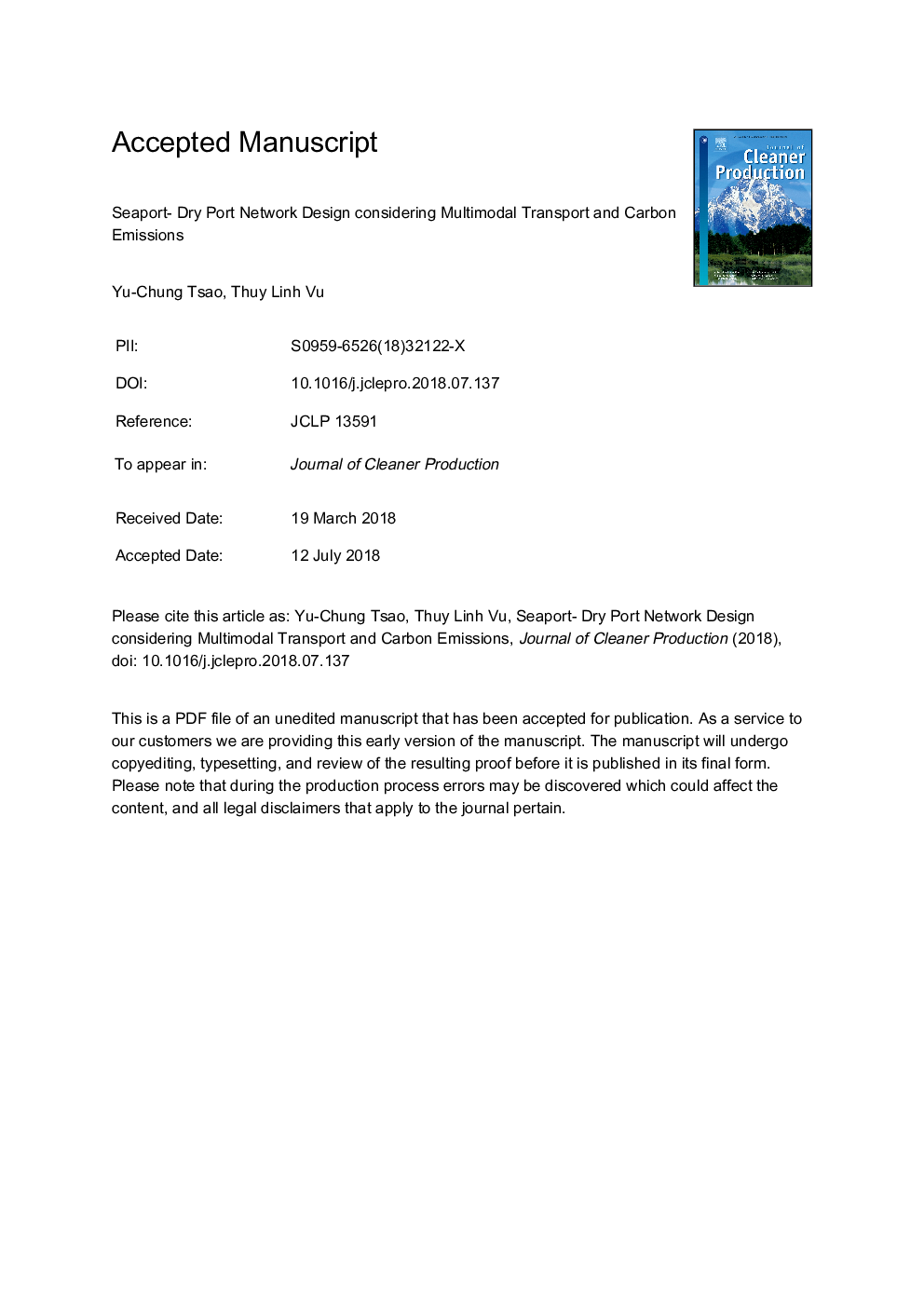| Article ID | Journal | Published Year | Pages | File Type |
|---|---|---|---|---|
| 8093220 | Journal of Cleaner Production | 2018 | 37 Pages |
Abstract
Dry port can speed the flow of cargo between ships and major land transportation networks while reducing carbon emissions and relieving seaport congestion. This study introduces a continuous approximation model to facilitate the design of a seaport-dry-port network that takes carbon emissions into account. Multimodal transport with two transport modes: rail and road are considered. Containers are delivered quickly from shippers to dry ports through road transport; then transferred to seaport through rail transport to save money and reduce carbon emission. For decision-making scheme, a game theory is used to help the seaport, dry ports, and shippers optimize their own benefits and guide them to determine their decision variables. A nonlinear optimization technique is used to solve this seaport-dry-port network design problem. The closed-form of all decision variables is found directly. A numerical study is conducted to derive managerial insights. The results show that the development of dry port concepts and multimodal transports could reduce the carbon cost from road transport.
Related Topics
Physical Sciences and Engineering
Energy
Renewable Energy, Sustainability and the Environment
Authors
Yu-Chung Tsao, Vu Thuy Linh,
